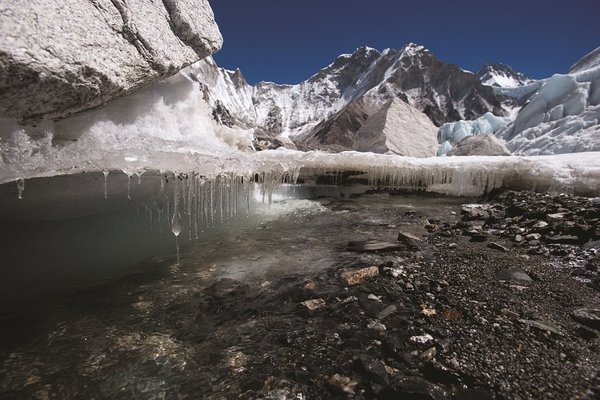- Share this article
- Subscribe to our newsletter
Melting glaciers expected to destabilise Asia’s rivers
A two-degree temperature rise could melt half of glaciers in Hindu Kush Himalaya region, thus destabilising Asia’s rivers, according to the Hindu Kush Himalaya Assessment published by the International Centre for Integrated Mountain Development (ICIMOD) in February 2019.
The Hindu Kush Himalaya region is known as the world’s “Third Pole” for its vast store of ice, and home to Mount Everest, K2 and other soaring peaks. The region covers 3,500 kilometres across Afghanistan, Bangladesh, Bhutan, China, India, Myanmar, Nepal and Pakistan. Nestled in its record-breaking peaks, glaciers feed 10 of the world’s most important river systems, including the Ganges, Indus, Yellow, Mekong and Irrawaddy, and directly or indirectly supply billions of people with food, energy, clean air and incomes. Additionally, the region contains four of the world’s biodiversity hotspots.
According to the new assessment, even the most ambitious Paris Agreement goal of limiting global warming to 1.5 degrees by the end of the century would lead to a 2.1 spike in temperature. One-third of the region’s glaciers, a critical water source to some 250 million mountain dwellers and the 1.65 billion others living in the river valleys below, would then melt. If global climate efforts fail, the study warns that current emissions would lead to five degrees in warming and a loss of two-thirds of the region’s glaciers by 2100.
When glaciers melt, they flow into lakes and rivers. Changes to the timing and magnitude of this melting leads to an increase in the number and size of glacier lakes, which can suddenly flood. This can lead to a surge of glacier runoff into major rivers, which could lead to flooding and the destruction of crops. As a result of the Hindu Kush Himalaya ice melt, more water is expected to surge through the Indus, Ganges and Brahmaputra rivers, forcing a change to the agriculture in the valleys around them.
Greenhouse gases are exacerbated by air pollutants originating from the Indo-Gangetic Plains—one of the world’s most polluted regions. These pollutants deposit black carbon and dust on the glaciers, hastening their melting and changing monsoon circulation, and rainfall distribution over Asia.
(ICIMOD/ile)





Add a comment
Be the First to Comment